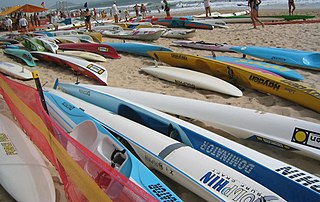
Surf lifesaving is a multifaceted social movement that comprises key aspects of voluntary lifeguard services and competitive surf sport. Originating in early 20th century Australia, the movement has expanded globally to other countries, including New Zealand, Ireland, South Africa, and the United Kingdom. Surf lifesavers in Australia are colloquially known as "Clubbies".

A drill instructor is a non-commissioned officer in the armed forces, fire department, or police forces with specific duties that vary by country. Foot drill, military step, and marching are typically taught by drill instructors.
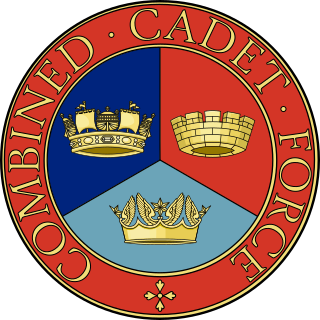
The Combined Cadet Force (CCF) is a youth organisation in the United Kingdom, sponsored by the Ministry of Defence (MOD), which operates in schools, sub divided into Royal Navy, Royal Marines, Army and Royal Air Force sections. Its aim is to "provide a disciplined organisation in a school so that pupils may develop powers of leadership by means of training to promote the qualities of responsibility, self reliance, resourcefulness, endurance and perseverance".

The Army Cadet Force (ACF), generally shortened to Army Cadets, is a national youth organisation sponsored by the United Kingdom's Ministry of Defence and the British Army. Along with the Sea Cadet Corps and the Air Training Corps, the ACF make up the Community Cadet Forces. It is a separate organisation from the Combined Cadet Force which provides similar training within principally private schools.
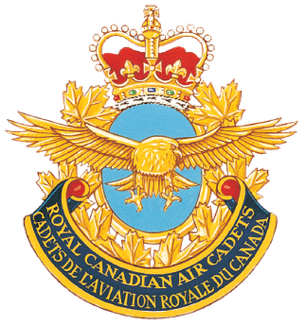
The Royal Canadian Air Cadets is a Canadian national youth program for young individuals aged 12 to 19. Under the authority of the National Defence Act, the program is administered by the Canadian Forces (CF) and funded through the Department of National Defence (DND). Additional support is provided by the civilian Air Cadet League of Canada (ACLC). Together with the Royal Canadian Sea Cadets and Royal Canadian Army Cadets, it forms the "largest federally funded youth program in the country". Cadets are not members of the military and are not obliged to join the Canadian Forces.

The New Zealand Air Training Corps is one of the three corps in the New Zealand Cadet Forces (NZCF), alongside the New Zealand Sea Cadet Corps and the New Zealand Cadet Corps. It is funded in partnership between the Royal New Zealand Air Force (RNZAF) and local communities. Members are civilians with no obligation to enlist in the New Zealand Defence Force (NZDF). Should a cadet enlist, their service in the ATC cadet does not translate into higher pay, rank, or seniority.

The National Cadet Corps (NCC) is the youth wing of the Indian Armed Forces with its headquarters in New Delhi, India. It is open to school and college students on voluntary basis as a Tri-Services Organisation, comprising the Army, the Navy and the Air Force. Cadets are given basic military training in small arms and drill. Officers and cadets have no liability for active military service once they complete their course.
Volunteer Police Cadets (VPC) is a nationally recognised uniformed police youth organisation which operates in most parts of the United Kingdom. It is one of several cadet youth organisations including the Army Cadet Force, Sea Cadets, Royal Marine Cadets, Air Training Corps and Fire Cadets. The Police Cadets teach young people skills in policing, and some may assist police officers with low-risk activities. The purpose of the VPC is not to recruit police officers of the future, but to encourage the spirit of adventure and good citizenship among its members.

The New Zealand Cadet Corps is one of the three corps in the New Zealand Cadet Forces, the other two being the Air Training Corps, and Sea Cadet Corps. There is no reference to the Army within the official title of the NZCC, but an army theme is used for the NZCC. All of its members, from the cadets themselves to the officers and the support committees are civilian volunteers. Members have no obligation to head into the New Zealand Defence Force (NZDF); however, some do choose to join the NZDF.
St John Ambulance Australia (also known as St John) (SJAA) is a charitable organisation, dedicated to helping people in sickness, distress, suffering or danger. It is part of an international organisation that consists of eight priories that form the Order of St John. The organisation is sometimes incorrectly referred to as "St John's Ambulance" instead of "St John Ambulance".
From its beginnings, St John Ambulance employed ranks and insignia to distinguish grades within its membership and management structure; these were extended across the wider organisation following its merge with the St John Ambulance Association to form St John Ambulance. Based upon the British Army officer and the British Army other ranks structure and insignia, the original ranks and insignia have been subject to several modifications over the history of the organisation.
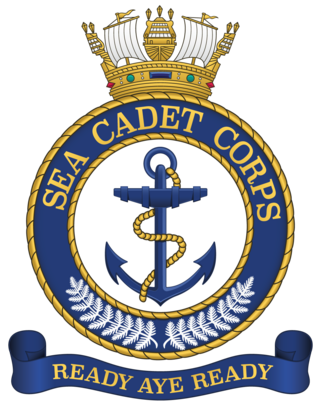
The NewZealandSea Cadet Corps is one of the three corps in the New Zealand Cadet Forces, the other two being the Air Training Corps, and New Zealand Cadet Corps. It is a military-style training organisation for young people between the ages of 13 and 21. Activities include sailing, and boat work, ropework shooting and drill, amongst other activities, many of which involving the other branches of the NZCF. Cadets need to pass an annual swimming test to undertake water-based activities.
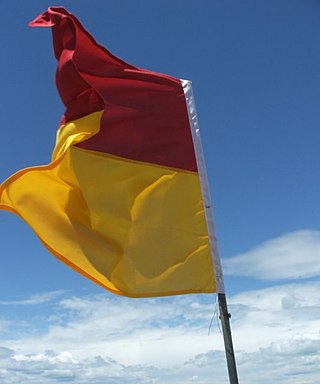
Surf Life Saving New Zealand (SLSNZ) is the national association representing 74 Surf Life Saving Clubs in New Zealand. The organisation's motto is 'In it for Life'. This refers to both the long relationship many members have with the organisation, as well as to the organisation's purpose of preventing drowning and injury, thereby saving lives.

The Australian Army Cadets (AAC) is the youth military program and organisation of the Australian Army, tasked with supporting participants to contribute to society, fostering interest in defence force careers, and developing support for the forces. The program has more than 19,000 army cadets between the ages of 12 and 20 based in more than 200 units around Australia. The values of the AAC are "Service, Courage, Respect, Integrity and Excellence".
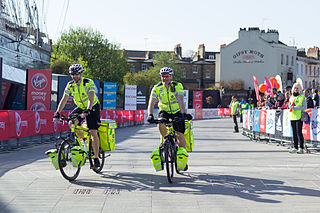
St John Ambulance is a employee - led with a CEO, charitable non-governmental organisation dedicated to the teaching and practice of first aid and the support of the national emergency response system in England. Along with St John Ambulance Cymru, St John Ambulance Northern Ireland, and St John Scotland, it is one of four United Kingdom affiliates of the international St John Ambulance movement.

St John Singapore is a voluntary secular organisation in Singapore established in 1877 which provides training in First Aid and Home Nursing. It is affiliated with the Order of Saint John based in the United Kingdom. Its ambulance members and nursing members perform voluntary first aid coverage duties during national events and other events. It comprises 3 sub-organisations, namely the St John Brigade Singapore, St John Association Singapore, St John Fellowship Singapore.
The Civil Air Patrol National Cadet Competition (NCC) program ran from 1974 to 2023. In 2023, the Civil Air Patrol decided to no longer hold a national NCC event in Dayton each summer. Instead, the eight regional winners will be announced and celebrated at the national level.
Within the framework of the training programme Air Training Corps cadets have the opportunity of taking part in many activities. On most Squadrons the only compulsory activities in the ATC year are attendance at various church parades, usually ATC Sunday and Remembrance Sunday. Many wings also insist that attending Wing Parade is compulsory.
The St John Ambulance Australian Youth is an organisation of St John Ambulance Australia that aims to teach and develop young people first aid and other skills with a spirit of community service. The movement has more than 3,500 youth members, aged between 12 and 18 across Australia.
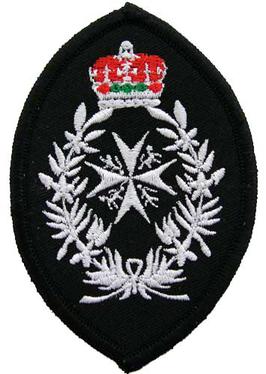
The Grand Prior's Award, also called the Grand Prior Award, named for Grand Prior of the Venerable Order of Saint John, is the highest award that a cadet in the St. John Ambulance Youth Programme can achieve after the Sovereign's Gold Award. The Grand Prior's Award recognises a self-motivated and capable young person's ongoing commitment, compassion, and support. It is recognised and awarded internationally by various branches of the program. The Grand Prior's Award is recognised in many countries, including England and the Islands, Wales, Canada, Malaysia, New Zealand, and Australia.

















